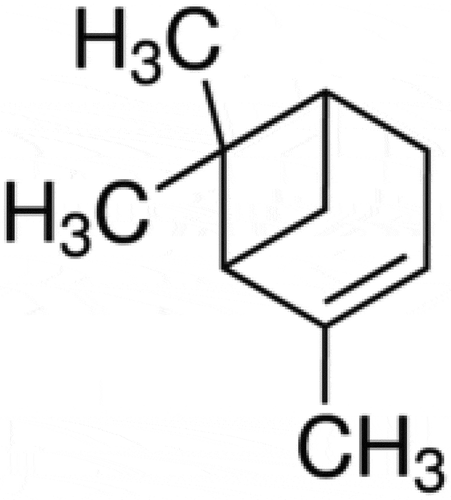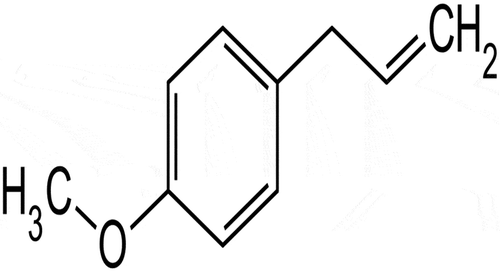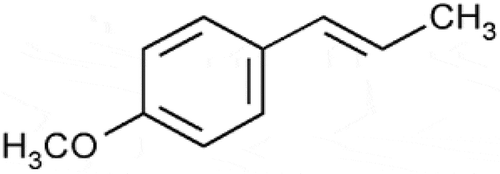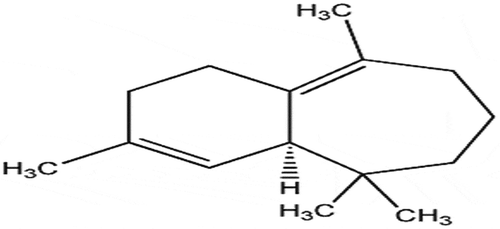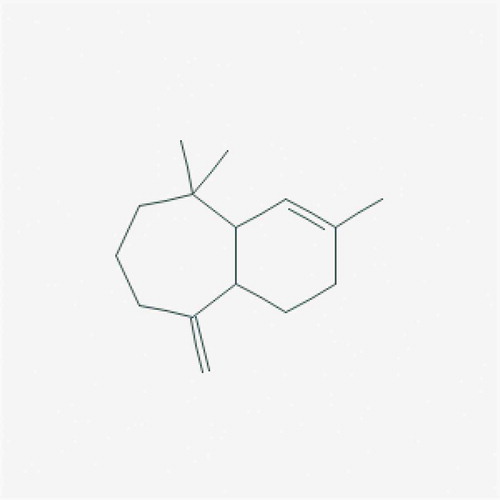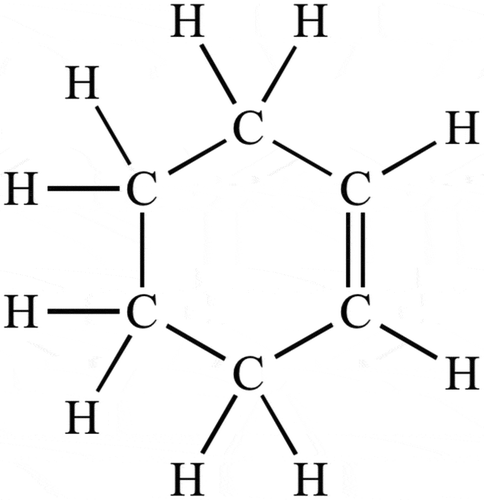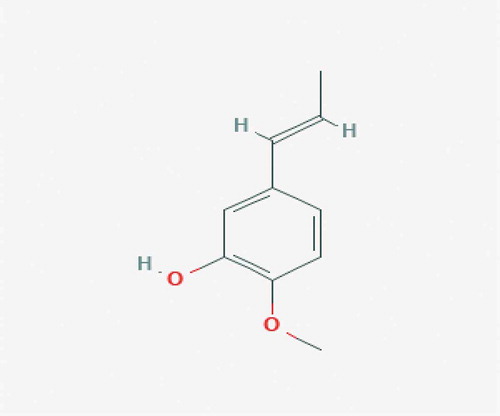Figures & data
Table 1. Plant spices known as anise
Table 2. Mean values or components of anise essential oil analyzed by GC-MS (Ullah, Mahmood, & Honermeier, Citation2013)
Table 3. Chemical composition of Pimpinella anisum essential oil analyzed by GC/MS (Singh, Kappor, Singh, de Heluani, & Caralan, Citation2008)
Table 4. Anise methanolic extract and molecular formula
Table 5. Chemical composition (%) of oleoresins (in various solvents) of Pimpinella anisum analyzed by GC/MS (Singh et al., Citation2008)
Table 6. Oil content and fatty acid composition of anise (Alfekaiki, Citation2018)
Table 7. Composition of Pimpinella anisum essential oil (%) of various origins (Saibi, Belhadj, & Benyoussef, Citation2013)
Table 8. Properties of aniseed oil (Yadav, Mahadwad, Kshirsagar, & Gite, Citation2015)
Table 9. Total phenols, carotenoids, and tannins in ethanolic extract of anise (Tolba, El-Sherif, & El-Sherif, Citation2012)
Table 10. HPLC-analysis of polyphenolic compounds in ethanolic extracts of anise
Table 11. Oil yield and fatty acid composition (%) of Tunisian and Egyptian anise (Pimpinella anisum) seeds (means of six replicates ± S.D). Values with different superscripts (a-b) are significantly different at p ˂ 0.05 (Rebey et al., Citation2017)
Table 12. Positive antimicrobial effects (average zone of inhibition) produced by methanol, ethanol, and aqueous extract of aniseed, and that in positive controls (Islam et al., Citation2016)
Table 13. Antifungal activity of the essential oils is expressed through the minimal inhibitory concentrations (mg/ml) (Starovic et al., Citation2016)
Table 14. Positive phytochemical assay of aniseed in aqueous extract (Islam et al., Citation2016)
Table 15. Antifungal activity of anise fluid extract and essential oil by the diffusion method (Kosalec, Pepeljnjak, & Kustrak, Citation2005)
Table 16. Antifungal activity of anise fluid extract and essential oil by the dilution method (Kosalec et al., Citation2005)
Table 17. Qualitative analysis of methanolic extract and various fractions (Shobha & Andallu, Citation2016)
Table 18. Phytoceuticals in methanolic extract and various fractions of aniseed (Shobha & Andallu, Citation2016)
Table 19. Essential oil composition of Tunisian and Egyptian anise (Pimpinella anisum) seeds (means of six replicates ± S.D). Values with different superscripts (a-b) are significantly different at p ˂ 0.05 (Rebey et al., Citation2017)
Table 20. Antimicrobial activity of P. anisum EO in disc-diffusion method (30 µl/disc) (Abdel-Reheem & Oraby, Citation2015)
Table 21. The major molecular compounds identified in the essential oils of cumin, clove, cinnamon, anis, and laurel using gas chromatography mass spectrometry (GC-MS) (Sergio, Fabiola, Guadalupe, Blanca, & Leon, Citation2013)
Table 22. Minimum inhibitory concentration (MIC) of Pimpinella anisum EO (Abdel-Reheem & Oraby, Citation2015)
Table 23. Antioxidant activity of aniseed (Pimpinella anisum L.) extracts as affected by maturity stages (Rebey et al., Citation2019)
Table 24. GC-MS chromatography of anise oil components (Obaid, Al Janabi, & Taj-Aldin, Citation2017)
Figure 8. Biochemical reactions leading to phenylpropenes in plants. The reactions catalyzed by known enzymes are indicated (Koeduka, Baiga, Noel, & Pichersky, Citation2009) .
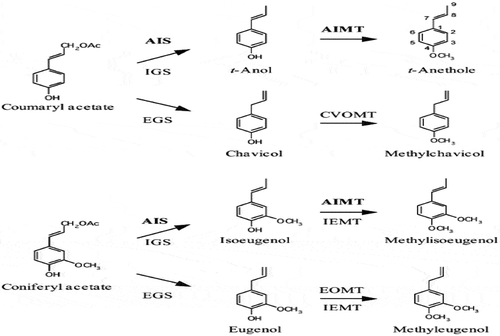
Table 25. Minimum inhibitory concentration (MIC) of P. anisum dried extract on different fungi species (Yazdani et al., Citation2009)
Table 26. Minimum fungicidal concentration (MFC) of P. anisum dried extract on different fungi species (Yazdani et al., Citation2009)
Table 27. The pharmacological effects of Pimpinella anisum (Shojaii & Abdollahi Fard, Citation2012)

